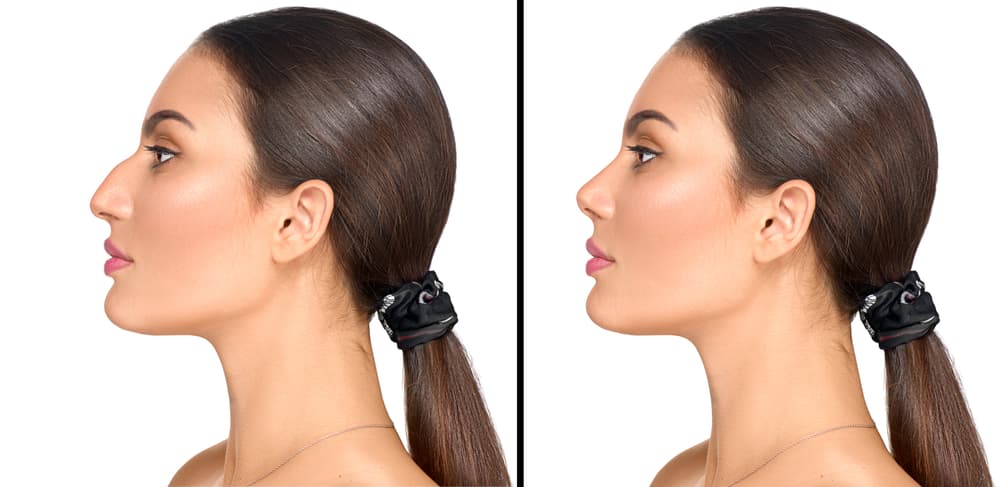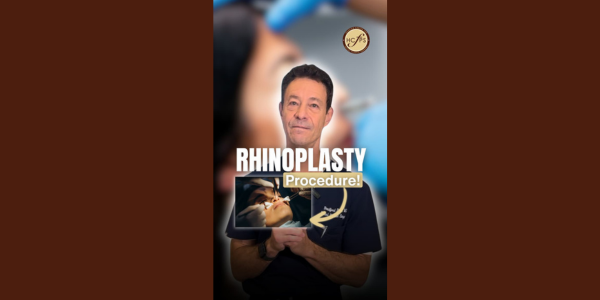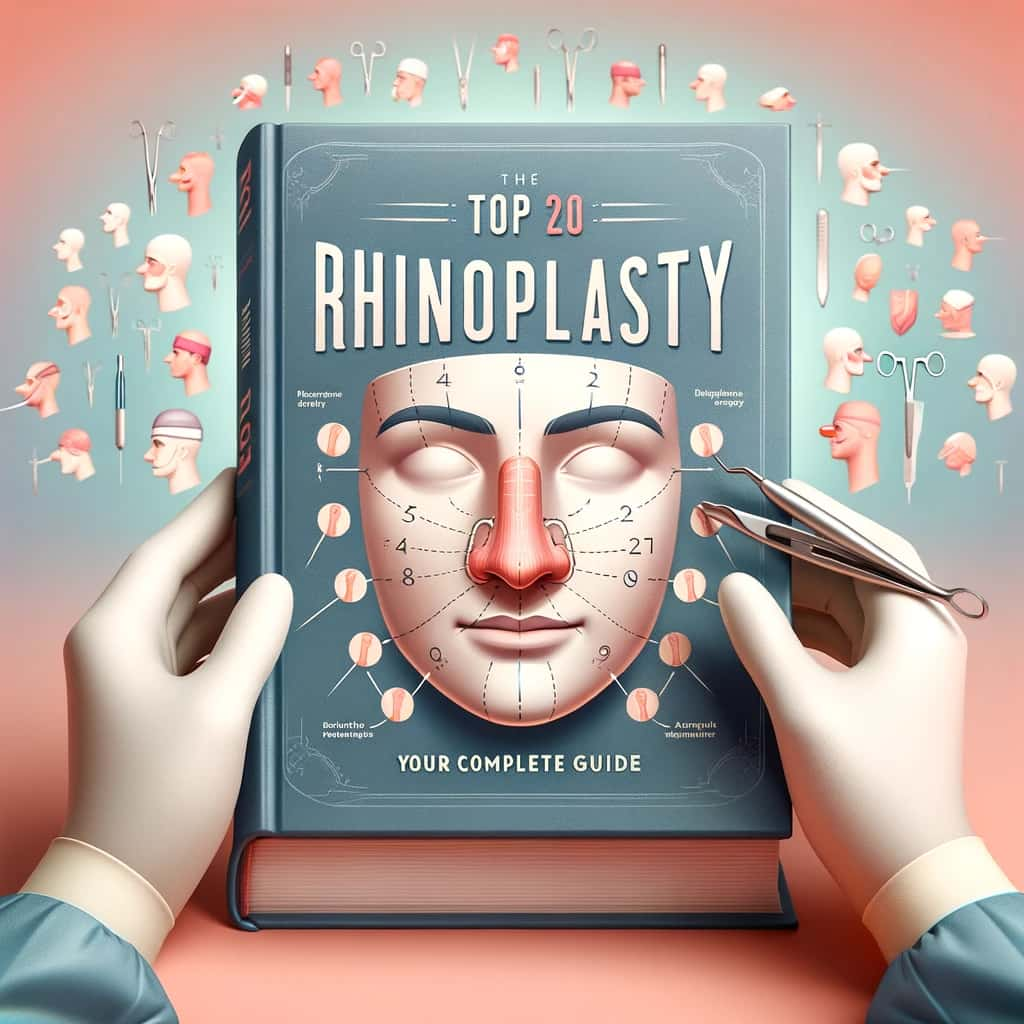Our noses play a pivotal role in facial harmony. While everyone's nose is unique, a prominent bump on the bridge of the nose, known as a dorsal hump, can be a source of aesthetic concern for many. Dorsal hump reduction, a surgical procedure within rhinoplasty, offers a potential solution. But how do you know if it's the right choice for you? Let's dive deeper into this transformative procedure, explore who benefits from it, and uncover if it aligns with your personal goals.
Understanding Dorsal Humps: More Than Just Appearance
Dorsal humps are composed of excess cartilage and bone, contributing to a distinctive bump on the nasal bridge. Their causes vary:
- Genetics: Dorsal humps are often hereditary, making their appearance more likely if it's common within your family.
- Injury: A previous nasal fracture or trauma can result in the formation of a bump on the bridge.
- Aging: As we age, cartilage and bones in the nose can shift, sometimes leading to a more pronounced dorsal hump.
Interested in dorsal hump removal rhinoplasty in Houston?
Request an appointment today with Bradford Patt, MD
The impact of a dorsal hump extends beyond how it looks.
Here's where it truly matters:
- Self-Confidence: When we're self-conscious about any aspect of our appearance, it affects how we carry ourselves and engage with the world. Dorsal humps can become a central point of focus, detracting from a person's overall self-image.
- Breathing Functionality: In severe cases, a large dorsal hump can constrict nasal passages, making it harder to breathe. This can negatively impact sleep quality, exercise tolerance, and overall well-being.
- Social Perception: Whether fair or not, studies have suggested that their facial features subtly influence our perception of others' attractiveness and trustworthiness. A prominent dorsal hump can create an unconscious perception of harshness or masculinity, depending on the context.
Inside the Procedure: What is Dorsal Hump Reduction?
Dorsal hump reduction is a targeted surgical procedure performed as part of a wider rhinoplasty (nose job). Here's a breakdown of what it entails:
- Consultation: The journey begins with a comprehensive consultation with a board-certified facial plastic surgeon. The surgeon will assess your facial anatomy and medical history and discuss your goals for the procedure. Using 3D imaging, the surgeon can show you potential results and help you visualize the change.
- Anesthesia: Rhinoplasties are typically performed under general anesthesia for your comfort and safety. In some specific cases, local anesthesia with sedation might be used.
- Surgical Approach: There are two approaches to dorsal hump reduction:
- Closed Rhinoplasty: Incisions are made inside the nostrils. This approach is ideal for smaller humps and leaves no visible external scarring.
- Open Rhinoplasty: A small incision across the columella (the skin between nostrils) provides the surgeon with greater access to reshape the nose. This technique is often suitable for more complex dorsal hump reductions.
- Hump Reduction and Reshaping: The surgeon carefully removes excess cartilage and bone that form the dorsal hump using precise instruments. They'll reshape the remaining structures to create a smoother, more refined nasal profile.
- Additional Refinements: Rhinoplasty offers a chance to address other aspects beyond the dorsal hump, such as refining the tip, reducing nostril width, or straightening a deviated septum.
The Ideal Candidate for Dorsal Hump Reduction
Are you considering this procedure? Here's what makes it potentially right for you:
- Primary Concern is the Hump: Your primary dissatisfaction with your nose stems from the dorsal hump itself.
- Realistic Expectations: You understand that the goal is improvement, not necessarily perfection, and have discussed achievable results with your surgeon.
- Good Overall Health: You don't smoke, are generally healthy, and understand any potential risks involved in surgery.
- Emotional Readiness: You are emotionally prepared for the recovery process and are approaching the procedure because of personal desire rather than external pressure.
Beyond Surgery: Investigating Non-Surgical Options
While surgery offers a permanent solution, there are situations where exploring non-surgical alternatives might be appropriate:
- Injectable Fillers: In cases of very minor dorsal humps, a skilled injector can strategically place dermal fillers around the hump, creating the illusion of a smoother bridge. Remember, this is temporary, with results lasting months rather than years.
- Non-surgical Rhinoplasty: Also known as a 'liquid nose job,' this approach utilizes fillers. It's best for minimal adjustments and won't replace surgery for major dorsal hump reduction.
Important Note: While these methods can be enticing, it's crucial to remember that they camouflage the hump rather than truly addressing it. If your main concern is the bump and you desire a permanent change, surgery remains the gold standard.
The Recovery Process: What to Expect
Like any surgical procedure, dorsal hump reduction has a recovery period. Here's what you can generally expect:
- Initial Discomfort and Swelling Some pain, swelling, and bruising around the nose are normal for the first few days. Your surgeon will provide medications and care instructions to manage these symptoms.
- Nasal Splint and Packing: You'll likely wear a nasal splint for a week to support the new shape. If nasal packing is used, it is usually removed within a few days.
- Gradual Improvement: Swelling and bruising subside significantly in the first 1-2 weeks. But be patient, the final result continues to refine over months as everything settles.
- Restrictions: Avoiding strenuous activities, wearing glasses, and blowing your nose will be important during the initial healing phase to avoid complications.
Potential Risks and Considerations
As with any surgery, dorsal hump reduction carries potential risks. Your surgeon will thoroughly discuss these during your consultation, but here's an overview:
- General Surgical Risks: Bleeding, infection, and reactions to anesthesia are potential, but they can be minimized with a skilled surgeon.
- Unsatisfactory Results: While the goal is a noticeable improvement, there's always a possibility of under- or over-correction. Open communication with your surgeon is vital to minimize this risk.
- Breathing Changes: In some cases, breathing might temporarily change until the swelling fully subsides. Significant breathing compromise is rare with experienced surgeons.
- Septal Perforation: While rare, a septal perforation (a hole in the septum) can occur if the cartilage and bone within the septum are overly disturbed during the procedure. This sometimes requires additional surgery for repair. Choosing a surgeon experienced in complex rhinoplasty minimizes this risk.
Beyond Aesthetics: The Psychology of Dorsal Hump Reduction
While we often focus on the physical transformation, dorsal hump reduction can also have a profound psychological impact. Here's an exploration of this often-overlooked aspect:
- The Burden of Self-Consciousness: When a dorsal hump is a source of constant self-criticism, it takes a toll on confidence. The surgery offers the possibility of letting go of this fixating insecurity.
- Reclaiming Your Image: Our noses are central to our faces, influencing how we see ourselves and how we feel the world sees us. Refining the nose can be an act of reclaiming a more positive and authentic self-image.
- The Confidence Boost: There's a well-documented link between improved physical appearance (when it aligns with personal goals) and improved self-esteem and social interactions.
- A Ripple Effect: Greater confidence in one area of life can spread to other aspects – how you carry yourself, the risks you're willing to take, the goals you pursue.
Important Caveats
Remembering that surgery is not a magical solution to all confidence issues is crucial. Here are points to consider:
- Therapy as a Complement: If your self-esteem struggles stem from deeper sources, dorsal hump reduction alone won't fully address them. Therapy can be a valuable tool alongside surgery for a holistic approach.
- External Validation vs. Inner Contentment: Ensure you're pursuing this procedure out of a desire to please yourself, not to conform to societal beauty ideals or win others' approval.
- Perfectionism Trap: All noses have some asymmetry. Aim for improvement and harmony rather than an impossible standard of perfection.
Frequently Asked Questions: Addressing Common Concerns
You likely have many questions swirling around. Here are answers to some of the most common ones:
- Will my nose look 'fake'?: A skilled surgeon aims for a nose that complements your other features and doesn't scream "nose job". Focus on finding a surgeon with an aesthetic sense that aligns with your own.
- Does it hurt? Discomfort during the initial recovery is expected but managed with medication. The procedure itself is performed under anesthesia.
- How long will the results last? Dorsal hump reduction is considered permanent. However, natural changes due to aging can still occur.
- Can I combine it with other procedures? Absolutely! Dorsal hump reduction is often combined with tip refinements, nostril reduction, or even chin augmentation for enhanced facial balance.
- How much does it cost? The cost varies depending on the surgeon, location, and procedure complexity. Discuss this thoroughly during your consultation.
Final Thoughts: The Importance of Experience
Choosing the right surgeon is paramount for the success of your dorsal hump reduction procedure. If you're in the Houston, Texas, area, consider consulting with Dr. Bradford Patt, a highly respected facial plastic surgeon with over two decades of experience in complex rhinoplasty procedures. His extensive knowledge and surgical skills can make all the difference in achieving the natural-looking, harmonious results you desire.





